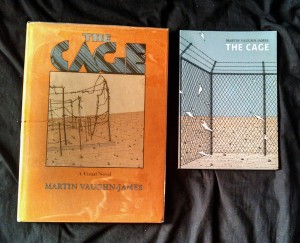 The Cage
The Cage
By Martin Vaughn-James
Coach House Books, November 2013
192 pages / Buy from Coach House Books
In November of this year, Coach House Books released a new edition of their seminal 1975 graphic work, Martin Vaughn-James’s The Cage. When I found this out, I was astounded. I’d been singing the praises of The Cage for years, recognizing it not only as one of the most important (and accomplished) work of graphic fiction ever created, but also insisting upon it being one of the greatest books every produced. Upon its initial publication, there were only 1500 printed copies; beautiful over-sized hardbacks with heavy brown paper inside. The book is a monolith, an object. Just the visual presence matches the title: The Cage, the book, the volume, holds something inside, much as a cage does.
I discovered the book from Richard Kostelanetz’s Dictionary of The Avant-Gardes, a resource that I read from cover to cover, taking note, over the course of the several months I spent reading it, on everything I wanted to learn more about, to discover. And then I spent several months following up on everything I had noted, often not remembering anything about why I had noted a book title or an artist’s name down. I worked in a library at the time, so I would just request anything from Inter-Library-Loan that we didn’t have on our shelves. It was through this process that Martin Vaughn-James’s book came into my life.
I took it home from work and blew through it, realizing that it was doing something heavy, something that I had long wanted the comic form to do, to work with narratives in ways similar to, say, Alain Robbe-Grillet or concrete poets had done, but to make use both of words & images, sequencing and panel development: to open up the tools available to a visual artist who also has a poetic bent. The book accomplishes so much, and I soon became obsessed. I read the book several times while I had it, and then checked it out several more times throughout the year. I desperately wanted to photocopy it (as copies available online were far too expensive) so I could always have it with me, but the book was too big to reasonably photocopy into a facsimile-ish form. I tacked down the three other primarily graphic works from Vaughn-James, again through inter-library loan, and marveled at their contents, but knew that The Cage was his masterpiece. Eventually a copy popped up on the internet for a prize I could sort of afford, so I jumped at it and the book joined my possessions.
To publish this book again in 2013 strikes me as no inconsiderable feat–while comics have certainly gained a larger presence as a “true literary form” (or whatever) by now, most of the dreck that people applaud is, of course, parallel to the novel, “realistic,” though told with pictures in addition to dialog. The Cage takes the height of the 70’s delirious experimentation with form and content, and pushes it into something that, even now, speaks as something new.
As such, I’m pleased to now revisit the work, in two parts. First I will comment upon the initial 1975 release, that is virtually impossible to come by outside of the library at this point, and second, I will consider the reprint, which offers both new front-matter & back-matter, as well as a formally different content, comparing and contrasting the two.
A Note: All photos included in this post were taken on my cellphone and do not necessarily reflect either the colors or the image quality of the printed books themselves
RE-READING THE 1975 EDITION OF THE CAGE
Points:
- A remembrance: movement, narrative, while lacking characters. Considered an impossibility when I’ve formerly brought it up, at one point this book remained my best defense; a reminder that we can move through narrative, visually & textually, without needing a character to follow.
- It is impossible to assume unity between text and image: image does not illustrate text, text does not explicate image–occasionally the two interact, and a resemblance between text and image can be found, but it would be foolish to assume that one always echos (or holds) the other.
- There’s a materiality present, both in the mimetic tearing of a photograph, of a page, of a leaf, of the split between words, endless ellipses, repetition (repetition) (visually, sonorously, literally) (repetition), an insistence (resemblance): word to page to sheet to leaf to bed-sheet to plant leaf to X to Y (though never a binary, no none)
- A flash occurred to me that perhaps the book is an echo of an idea: it is impossible to both read the text and look at the images simultaneously, and since one does not illustrate the other, the only way to incorporate both into a singular mental space would be to hear the text as we saw the images. So, a performance: the imagery of each page projected as a slide (and a blank slide for the blank page) while the text is read aloud (live or pre-recorded); the time a slide spends on screen predicated by the time the reading of the text takes–textless panels presented in quick secession.
- Of course, would would have an entirely different experience in this manner. One would also, but of course, experience something different if there was a decision made to only read the text straight through, or, contrarily, to only follow the narrative of the imagery: the overall experience would be shaped similarly to that of the book as a whole, but what is inside that shape would be entirely different.
- There’s an insistence to the way one looks at a page, especially in consideration of two-page spreads. The entire spread to the edges of the book, a closer look inside the margins, the image as entire field of vision, the text, back to the image–and to think narrative is so difficult for some.
- The words, the language, the experience of such, reads like a brilliant prose poem, long form, an echo of a reminder of something you’ve heard before, an architectural tract into the void: the entropy of ruins re-written into spatial experience, like perhaps one can harken to Land Art (everyone knows Robert Smithson’s “Spiral Jetty”), or maybe Michael Heizer’s city-compound, the cage the cage the cage, the cube, temple labyrinthine, interiors, hallways
- An insistence upon the literality of recording devices. Ink, sounds, the photograph. The image is at stake as much as the word, as much as the page, as much as the hysterical silence
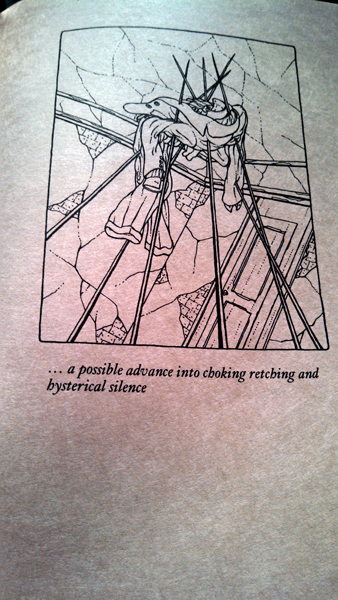
- I’ve insisted, to myself, upon re-reading the book as the original monolith I know it as before approaching the new edition. This insistence comes from a fear: a fear mediated upon the extra information contained in the new edition: an introduction by comic artist Seth, an introduction by Vaughn-James himself. In France there have been entire books of critical studies dedicated to the comic, some based on preliminary sketches & notes for The Cage. Some of these sketches are included on the press release. These things scare me in a way. They exist outside of, but part of, the book as I know it. I don’t want the book explained to me. I want the experience of the book to remain unmediated by anything but materiality. However, I’m also excited. I want to know what this information, this extra content, holds. I want the French critical studies to be translated. I want to see all the notes myself. I both want a blind and a mediated experience. Perhaps one can have both.
NOTES UPON AN INITIAL READING OF THE 2013 EDITION OF THE CAGE
- Seth’s introduction (“an appreciation”) is good. I can’t imagine it being much appreciated without having delved into the book itself (as such, it seems like it would function better as an afterward), as it doesn’t so much introduce anything but a mystery, Maybe that’s all you need. Seth says a lot of stuff I mention above in different ways. He also points out something that I think is really important: the book is not to be understood as much as it is to be experienced. This, I think, really highlights why both Seth & I, myself, appreciate the book to such an extreme degree. This is a comic-book-degree-zero, so to speak. I just checked, and I haven’t actually read any of Seth’s comics. I had a roommate who swore by George Sprott, but the subject matter (and art style) was never enough to sway me to jump in. However, this intro, undoubtedly enthused about my favorite comic, as well as a mention of Seth’s that Last Year at Marienbad is his favorite movie, has me a little more curious.
- The introduction is titled “Man Fears Time, But Time Fears Only The Pyramids.” A variant on the great great great quote of Cheops: Man fears time, but time fears the pyramid. I first encountered this quote as an epigraph for a James Lee Byars catalog. We’re in good company.
- Outside of the diegesis of any of his visual-texts (his comic books, of which I’ve tracked down all four, though The Cage is the only one I’ve had the luxury of reading more than once), I’ve never once seen a remark from Martin Vaughn-James himself. The preface, written in 2006, is somewhat of a breakthrough, although not totally surprising. On my initial interaction with the book, I came away thinking of the nouveau-romanciers that I was fully obsessed with at the moment: Robbe-Grillet, Pinget, Simon, Duras, Sarraute, etc etc etc. Vaughn-James himself remarks that it was the reading of Robbe-Grillet’s Towards a New Novel, and then a devouring of the rest of the new-novelists, that lead to The Park and finally The Cage. Later, in Paris, Vaughn-James hooked up with Éditions de Minuit and did work for them, which explains how there’s an “illustration” by Vaughn-James of Robbe-Grillet’s Topology of a Phantom City.
- And a difference, of course, immediately presents itself between the reprint & the original: the size. The 1975 edition of The Cage, 9 by 12 1/2 inches, I’ve only ever read (and read many times) laid open on my bed, my body postured horizontal. The book is too big to read sitting up, perched on your lap. The reprint is portable, it can be read in a chair, on the bus, it can be read more easily. It needs no surface to support it. A material difference in a book that is built as experience. But, the experience does not become ruined, rather, it just changes.
- Similarly is the decision to change the dark brown, textured pages to a bright white, semi-gloss stock. There’s a difference, but what mental difference this affects is inarticulable. The images become so much more crisp and clinical. There’s a coldness that was present in the original, but carries heavier here. This is, perhaps, to the books advantage. As this ostensibly objective position heightens what occurs on the pages of the book. The horror of the void is the violence of the white page.
- The smaller size also doesn’t prevent the image from being as encounterable–while the book, before, could not really be lifted up for close scrutiny, the smaller & lighter reprint carries that advantage. You can hold the book an inch from your face and not have to deal, as much, with the physicality of weight.
- It seems that there’s an eBook available: avoid that like the plague. Vaughn-James’s work is as much about materiality as filmmakers such as Michael Snow, Paul Sharits, etc. A simulacrum would divorce the experience from the material.
- A second reading at such close proximity reveals occasional paradox: the text speaks of the cage’s resilience to decay as the image shows the cage in a state of collapse; the text speaks of the sequences moving faster while the text builds up, preventing the page from being turned as rapidly…
- A second reading at such close proximity, indeed, sounds intensity. To read the book twice in two days, a heaviness. Having read the book probably five or six times over the last four years, there had always been distance in between, the closest readings being, perhaps, my initial reading and then the follow-up reading done immediately before I had to return the book to the library (before I had committed savings to a copy of the sacred tome I could call my won). Twice in two days throws you into the self-sufficient world of The Cage a world populated by pyramids, labyrinths, cubes, cameras, microphones, beds, sheets, ropes, columns, decay, entropy, bitumen, the spread of ink, the room, space, refusal, destruction, decay.
- To be stuck inside forever would surely be lonely, but endlessly fascinating. Decay tourism but without a sense of imperialism–the impossibility of movement, refusing an insistent body, present.
- Caveats aside, I would implore readers of this blog to pick up this comic, without expectation of anything resembling a comic; to just be open to the experience of reading. The new edition is a great, and finally widely available, opportunity to encounter this dark and troubling world.
Tags: coach house books, comix, essential, martin vaughn-james, pyramids, refusal of character, seth, the cage, tombs

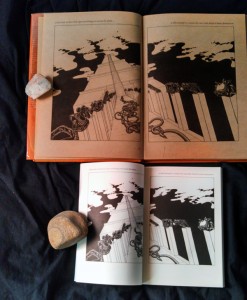
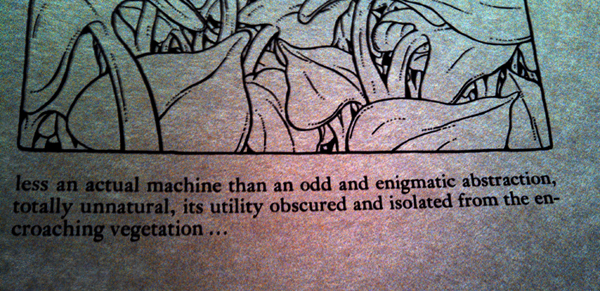
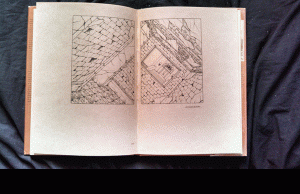
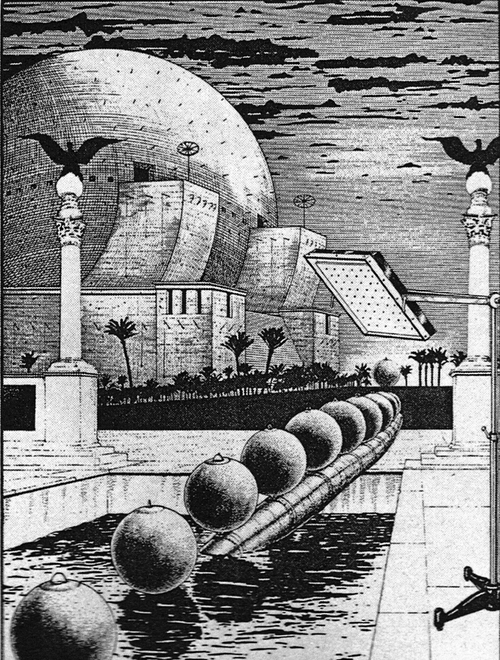
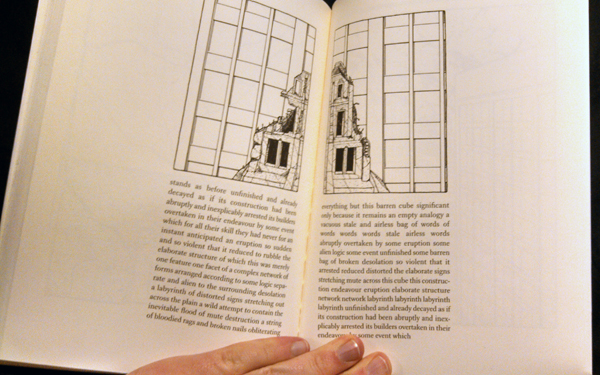
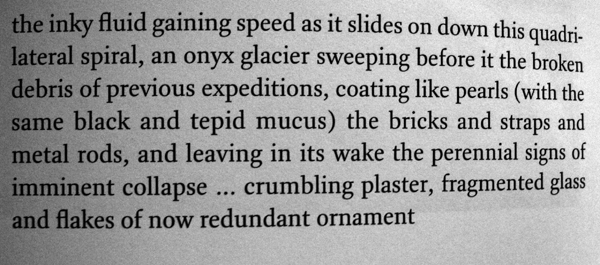
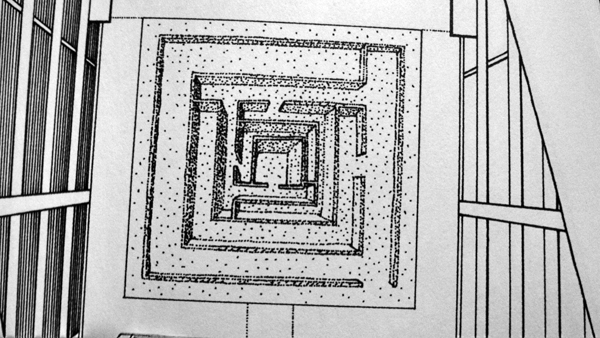
Mike, this looks incredible. Thanks for the recommendation.
I’m interested to know what you consider to be “dreck.”
really liked reading this article.
I should revisit this. My tastes have changed considerably since I last read it on your recommendation, and I have to say it sounds a lot more enticing now.
see it at google books
https://www.google.hr/search?tbm=bks&hl=en&q=Martin+Vaughn-James
most autobiographical “indie comix” about misanthropic white dudes who “can’t get laid,” most of what’s been in the “best american comics” anthologies for the last few years, etc
So mostly Clowes rip-offs then?
Have you read Jesse Reklaw’s newest? It’s an auto bio comic that actually maters, imho.
Mike, thanks for bringing attention to this book. I’m really glad that Coach House is making this book available to so many more people. It’s an ideal foundational work for opening up the possibilities of comics.
And I appreciate you taking the time to offer the specifics of your readings. I always enjoying seeing how the physical nature of a book effects its reading, and this is basically a control experiment in that.
One note about your comment: “most of the dreck that people applaud is, of course, parallel to the novel, “realistic,” though told with pictures in addition to dialog.” I’d ask you reconsider that. Ten years ago, definitely, and, five years ago, maybe, I would have agreed. But emo-auto-bio doesn’t really seem to be at the center of the critically lauded comics world anymore. Maybe I’m skewed by my own little world, but it seems that readers of idea of “good comics” has become much more expansive. I can’t say that I’m well versed in the Best American canon, but, for instance, Matt Madden, one the series editors, is the one American member of the OUBAPO group (the Harry Mathews of comics, if you will), and does amazing things with formal experimentation (we published something way back on Action,Yes). Basically, I don’t think comics need to imitate mediocre New York short stories to get claps anymore.
Thanks for writing this, Mike. This is an excellent description of the reading experience.
This is a totally fair comment, I will admit I’ve been far more “out of it” when it comes to what’s going on in comics since I moved to California that I was beforehand (so the last three years or so).
Has there been any OuBaPo publications in English, or does Madden just work independently of the French group? I’ve seen some scans of French OuBaPo stuff, but never any in English–i’d be interested in seeing how it pans out in comparison to the OuLiPo stuff.
Hey Mike,
Madden has a few things, the primary one being his 99 Ways to Tell a Story (a comics riff on the Queneau project).
You can also check out one of his works using constraints here at Action, Yes: http://actionyes.org/issue1/madden/madden1.htm
http://choicegoods.org/